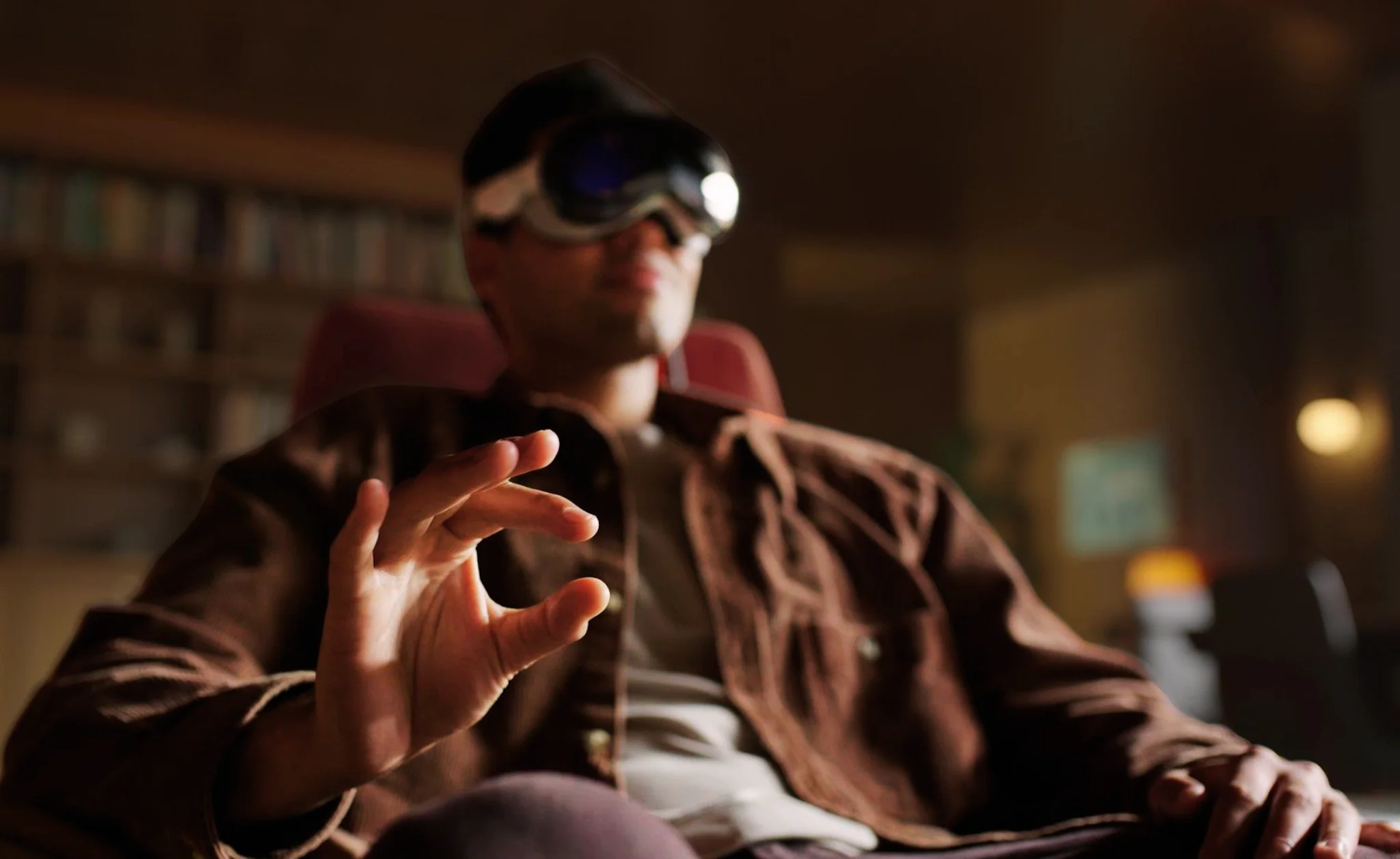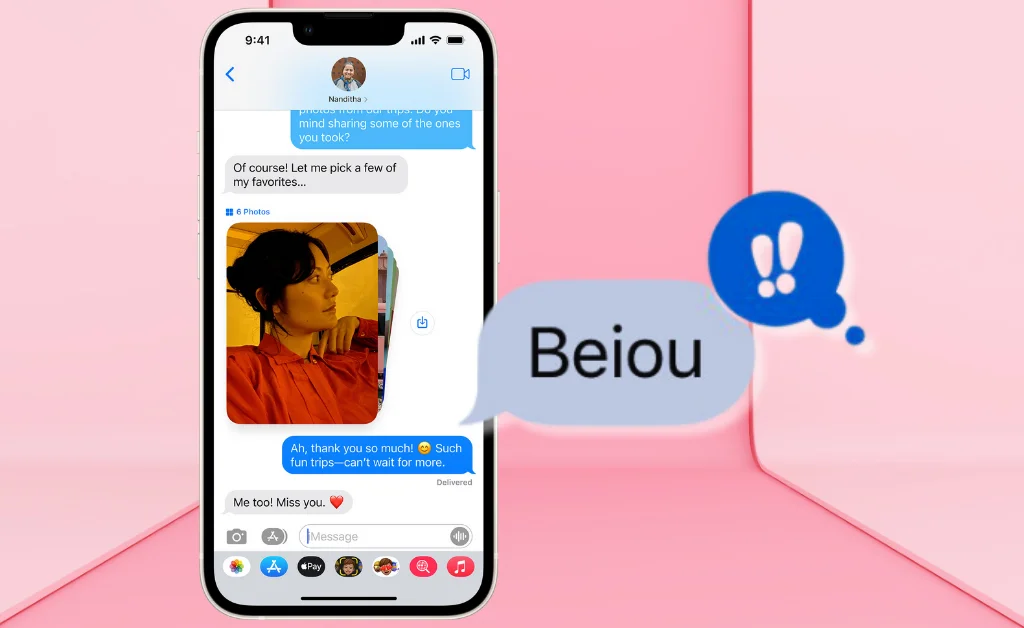Apple’s much-anticipated entry into the augmented and virtual reality space is finally here with the launch of the Apple Vision Pro or Spatial Computing headset. As one of Apple’s most ambitious products packed with brand-new technology, there is a lot to unpack about this futuristic gadget.
This comprehensive guide will walk you through every key specification, feature, app, accessory, and caveat you need to consider before buying this powerful but pricey device.
Apple Vision Pro Design

On a purely physical level, the Vision Pro headset features a stand-out, ski goggle-inspired design centered around durability and comfort:
- The sleek aluminum exterior frame is matched with an adjustable headband and light seals for a personalized fit.
- Cushioned interior padding with light enhancement ensures visual clarity during use.
- Most components, like battery packs, sit separately to prevent front-heavy imbalance.
- Intake and exhaust fans regulate temperature to prevent electronics from overheating.
- A total of 23 sensors, including cameras, lidar, IR sensors, and mics, feed spatial data to the headset’s processing chips.
With an expansive suite of cameras and sensors equipped for spatial computing, the Vision Pro maps its surroundings in intricate detail. Everything from the position of virtual objects to ambient lighting is anchored convincingly in the real-world environment.
Twin Displays and Lenses That Immerse You

Providing you with crisp and fluid visuals are the Vision Pro’s twin 3D OLED displays with specialized lenses:
- One display dedicated to each eye with a combined 23 million pixels
- Apple partnered with Zeiss to develop smart prescription lenses
- Unique diffractive optics ensure virtual elements remain in focus
- Images stay sharp and stable thanks to 120 Hz refresh rates
- Vibrant colors and contrasts heightened by HDR support
Augmenting the visual fidelity even further is the custom R1 chip, which rapidly processes imagery while eliminating any discernible lag. All of this technology combines to make using the Vision Pro feel fully immersive.
Intuitive Hand and Eye-Based Controls

But what truly sets the Vision Pro apart from existing AR/VR headsets is the revolutionary control scheme centered around just your eyes and hands:
- Eye tracking with speed and accuracy matching human perception
- The headset senses pinch gestures from a 180-degree field of view
- Gyroscopes and accelerometers detect natural head orientation and motion
- A dedicated console button provides quick access to the home screen
- Digital crown for precise manual focus adjustments
So, rather than relying on handheld controllers, you use the Vision Pro by simply looking directly at elements to interact with them while making finger-pinch gestures. It’s an incredibly intuitive system once you get the hang of it.
Deep Integration with Apple's Ecosystem
Given Apple developed both the Vision Pro hardware and its visionOS software, tight integration with their existing ecosystem comes as no surprise:
- Automatic syncing with your iCloud account, photos, messages and more
- Spatial audio integration creates immersive, directional soundscapes
- Leverages iPhone’s Face ID data to calibrate initial headset fit
- One-tap pairing with your Mac as a 4K display surface
This out-of-the-box compatibility with Apple’s smartphones, tablets, and computers really amplifies the headset’s capabilities and convenience. It makes adopting the Vision Pro’s novel AR functionality feel like a natural progression.
Early App Lineup Showcases the Possibilities
The Vision Pro’s success will ultimately depend on how developers harness its groundbreaking features into practical applications. The initial lineup shows immense potential across many categories:

Productivity
- Manage tasks via OmniPlan or Microsoft Excel
- View life-sized 3D prototypes with precise measurements in JigSpace
- Edit professional photos and graphics within Adobe Lightroom
Social
- Pull up multiple FaceTime conversation windows and place them spatially via spatial audio integration
- Host meetings with photorealistic Zoom avatars mapped to your real expressions
- Immerse yourself in VR chat environments rich with detail
Media
- Step into detailed 180-degree recordings of artists and athletes with Apple’s new Immersive Video capture technology
- Experience cinematic and gaming visuals in more expansive resolutions like 8K
- Disney+ app projects background scenes that fully surround you
Gaming
- Manipulate dynamic virtual game pieces anchored convincingly on real surfaces via Demeo
- Master recipes by manipulating realistic cooking implements within a virtual kitchen via the Cooking Simulator
- Put golf balls around physical obstacles in your environment with What the Golf?
While there’s no single must-have app yet, the Vision Pro ecosystem shows immense promise. And the headset capabilities lend themselves extremely well to spatial computing use cases.
EyeSight Creates Expressive, Vision-Based Avatars
But the Vision Pro’s most immediately striking feature is EyeSight – front-facing cameras visually convey a digital recreation of the wearer’s face:
- Cameras facing inward continually track eye movements down to microscopic quivers
- Outward RGB cameras capture a full range of facial expressions
- EyeSight recreates this facial data on the external display as a live digital avatar – your “Persona“
- This Persona will match your current facial expressions, reacting to music or mimicking a smile
- Visual cues indicate when you are looking at VR environments versus the real world
It’s a mesmerizing, semi-transparent effect that courts lots of attention. But beyond being eye-catching, it has huge implications for communication.
In video calls, your Persona will provide a live motion-captured feed of your actual face rather than just a static avatar. This opens the door for conveying nuanced non-verbal reactions even while wearing a headset.
Apple Vision Pro Specifications Breakdown
- Displays: Dual 3D OLED, 120 Hz refresh rate, 23 megapixels combined resolution
- Audio: Embedded spatial audio speakers, Dolby Atmos support, audio ray tracing
- Chipset: Apple M2 powers core functions, R1 handles immersive graphics
- Sensors: 12 cameras, 5 sensor arrays, 6 microphones. Accelerometer, gyroscope
- Control Inputs: Head tracking, eye tracking, pinch gestures, console/digital crown buttons
- Battery Life: 2-2.5 hours continuous use
- Storage: 256GB base model
- Connectivity: WiFi 6, Bluetooth 5.3
- Accessories: Prescription lens inserts, protective carrying case
Delving into the nitty gritty technical specifications provides further perspective on where exactly the high $3499 price tag comes from. This headset packs custom silicon coupled with a dense sensor array to enable video pass-through and convincing virtual object placement.
Advanced hardware specs combined with intuitive software really sell the experience of effortlessly interacting with apps overlaid seamlessly into your real-world environment.
VisionOS Software - An OS Designed for Spatial Computing
But powering the Vision Pro’s bleeding-edge functionality requires an entirely new underlying operating system – enter VisionOS. Built from the ground up to enable what Apple coins “spatial computing,” VisionOS allows apps to break free of a fixed rectangular screen:
- Apps manifest as movable 3D windows arranged in an open space
- The interface remains responsive down to the subtle head and eye movements
- Leverages head tracking and lidar to intelligently interact with physical room lighting and surfaces
- AR environments like digitally reconstructed locations respond accurately to perceived motion
It lends apps a skylight-esque quality, enabling you to peer into their contents while retaining peripheral environmental awareness. And it paves the way for futuristic applications dependent on blending digital elements with real-world spaces.
Beyond the slick UI, VisionOS brings over familiar Apple ecosystem features like SharePlay, ScreenTime parental controls, and Guest User mode. It firmly establishes spatial computing experience standards early.
Pricing, Availability & Support
The Apple Vision Pro went on sale on February 2, 2023. Various purchase options exist:
- $3499 retail pricing for launch 256GB SKU
- Additional storage upgrades to be announced
- Purchase online via the Apple Store app or website
- In-store pickup with demo slots available through retail Apple Stores
Apple is offering customer service options, including live Vision Pro tutorials and guidance. Support avenues encompass:
- Product seminars and personalized buying advice available via retail Apple Store appointments
- 90-day risk-free returns for online purchases
- One-year limited hardware warranty
- Options for extended AppleCare+ coverage
Given its cutting-edge nature and sheer number of novel technologies introduced, investing in an early Vision Pro does incur some risk. However, Apple is alleviating concerns via extensive customer service and initial purchase protection.
For those on the fence, trying before you buy remains the best option to gauge if the Vision Pro aligns with your needs and expectations.
The Bottom Line
There’s no denying the Apple Vision Pro headset stands poised to push augmented reality into the mainstream. Both the hardware capabilities and visionOS software set new bars for immersive spatial computing.
But a sky-high price coupled with unproven developer support beyond Apple’s ecosystem keeps expectations for mass adoption grounded as well. As with most first-generation products, this very many targets early adopters.
That said, you cannot deny the sheer technical wizardry behind the EyeSight avatars, responsive environment interactions, intuitive control mechanisms, and vivid stereoscopic visuals. It brings sci-fi interfaces strongly into reality – passable limitations but a thrilling first step. For those desiring a sneak peek into tomorrow’s computing landscape, look no further than the Vision Pro.







